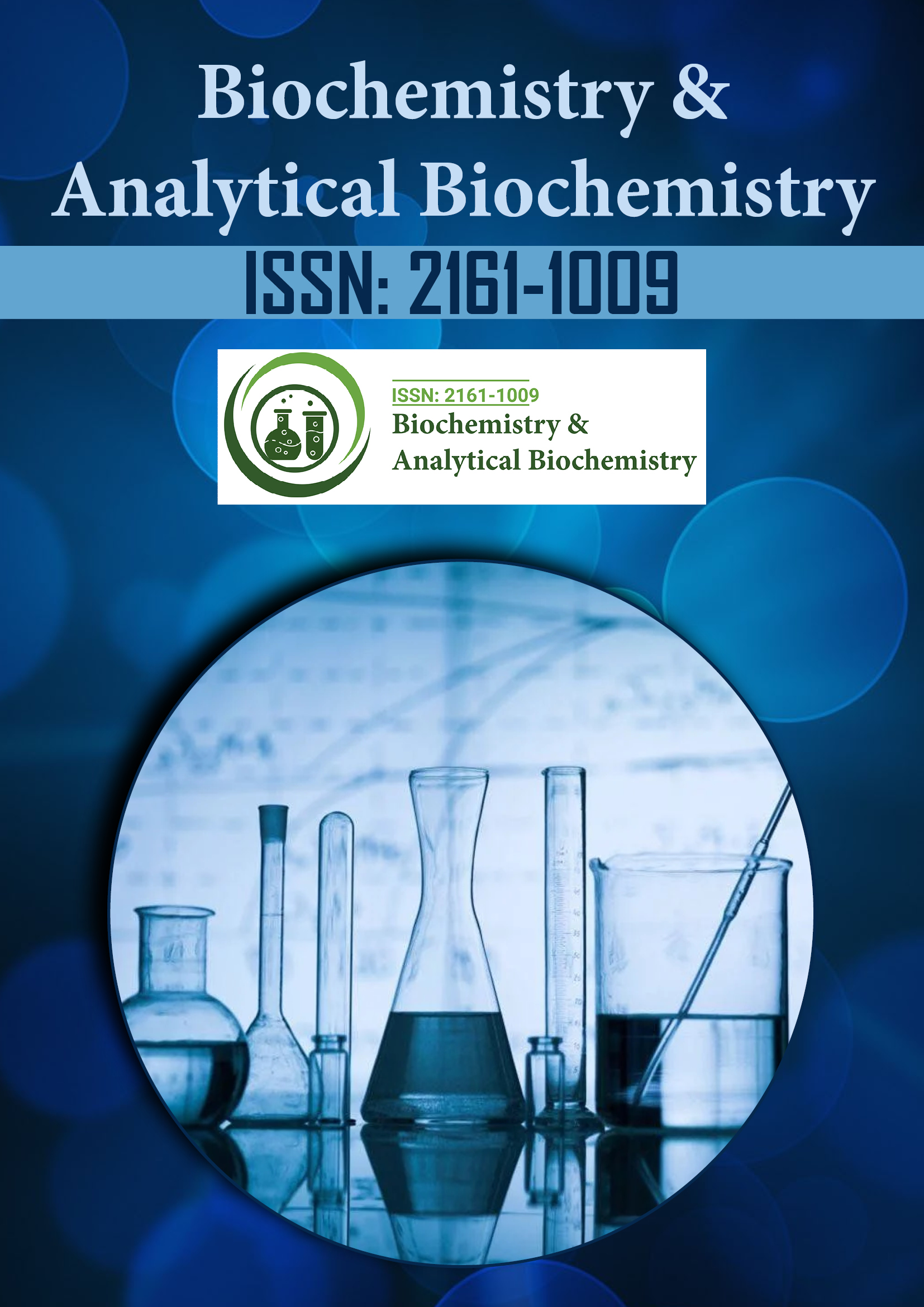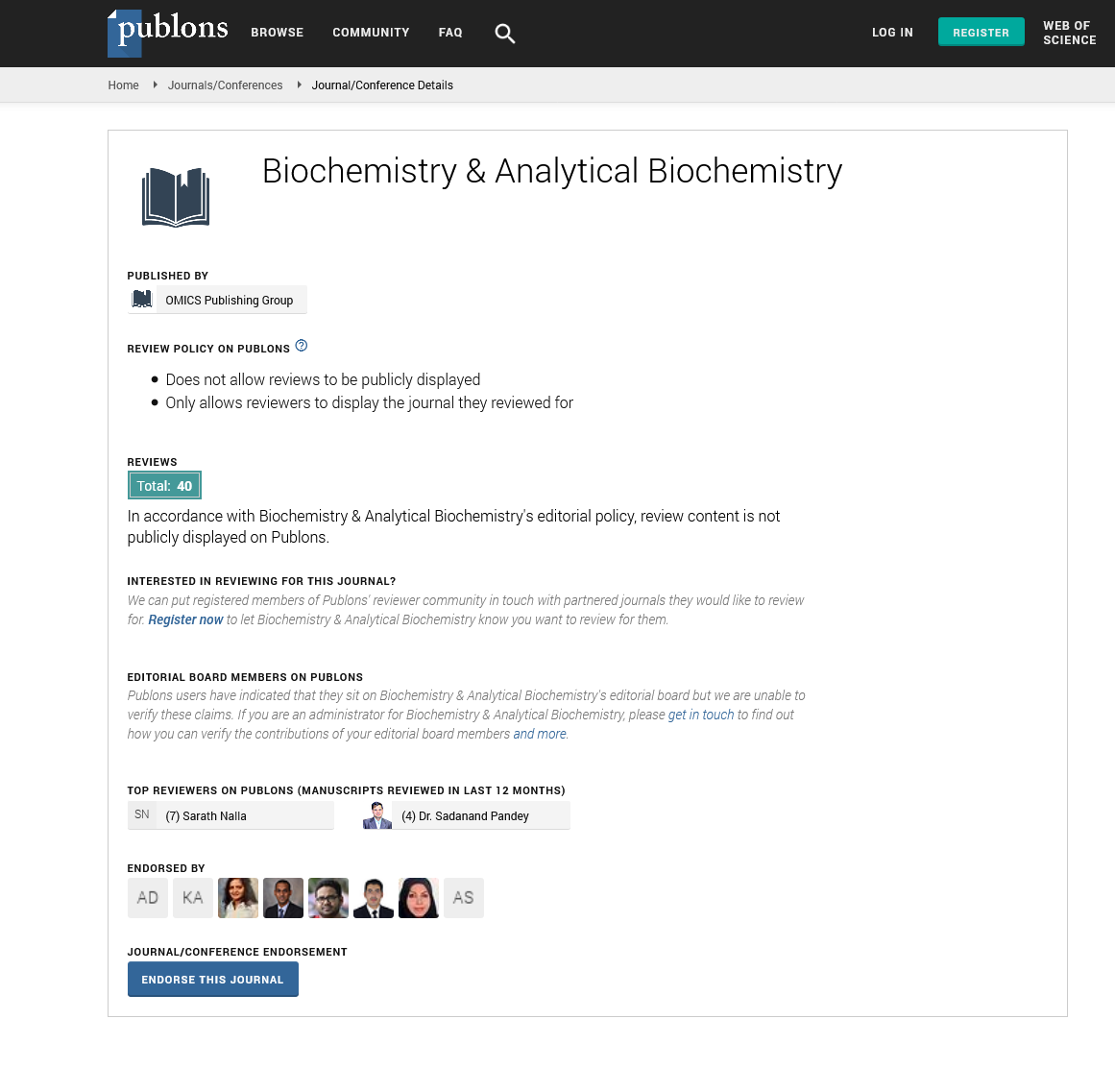Indexed In
- Open J Gate
- Genamics JournalSeek
- ResearchBible
- RefSeek
- Directory of Research Journal Indexing (DRJI)
- Hamdard University
- EBSCO A-Z
- OCLC- WorldCat
- Scholarsteer
- Publons
- MIAR
- Euro Pub
- Google Scholar
Useful Links
Share This Page
Journal Flyer

Open Access Journals
- Agri and Aquaculture
- Biochemistry
- Bioinformatics & Systems Biology
- Business & Management
- Chemistry
- Clinical Sciences
- Engineering
- Food & Nutrition
- General Science
- Genetics & Molecular Biology
- Immunology & Microbiology
- Medical Sciences
- Neuroscience & Psychology
- Nursing & Health Care
- Pharmaceutical Sciences
Perspective - (2025) Volume 14, Issue 1
Exploring the Functions of Orphan Enzymes in the Human Proteome
Silvia Andropoulos*Received: 03-Mar-2025 Editor assigned: 05-Mar-2025 Reviewed: 19-Mar-2025 Revised: 26-Mar-2025 Published: 02-Apr-2025, DOI: 10.35248/2161-1009.25.14.574
Description
In the genomic age, we have sequenced the human genome, catalogued thousands of proteins and charted out major metabolic and signaling networks. Yet, within this sea of knowledge lies a paradoxical blind spot: the orphan enzymes — proteins with confirmed enzymatic activity but unknown physiological substrates or functions. These "biochemical dark matter" entities constitute a surprisingly large fraction of the human proteome and they present one of the most tantalizing frontiers in modern biochemistry.
It is estimated that more than 15% of all human enzymes remain orphans. These proteins, often evolutionarily conserved, possess active sites that strongly suggest catalytic capability and many demonstrate in vitro activity on generic substrates. Yet their true physiological roles remain elusive. This discrepancy reflects a broader limitation in our ability to map genotype to phenotype — not due to lack of sequence information, but because of our limited capacity to integrate molecular context, substrate specificity and biological relevance.
Why do these enzymes remain orphans? One reason is methodological. Traditional substrate identification strategies rely on known metabolic frameworks or high-throughput screens using metabolite libraries that are inherently limited. If an enzyme acts on a rare, transient, or compartmentalized molecule, it may escape detection. Furthermore, many orphan enzymes may require co-factors, scaffolding partners, or allosteric regulators absent in vitro, making activity difficult to reproduce outside the cell.
From a systems perspective, orphan enzymes are often dismissed as low-priority curiosities. Yet this outlook ignores their potential importance in health and disease. Several known disease-associated genes were once orphans. For example, the gene ALDH7A1, long considered an enzymatic orphan, was later found to play a crucial role in lysine catabolism and is now linked to pyridoxine-dependent epilepsy. This case illustrates how illuminating the function of a single enzyme can reframe our understanding of an entire metabolic pathway and its relevance to human health.
Moreover, orphan enzymes are increasingly implicated in host-microbiome interactions. Many microbial-derived metabolites act as substrates or regulators for human enzymes, creating a biochemical interface that has not been systematically explored. The emerging field of metabolomics has begun to uncover such interactions, but without a complete enzymatic atlas, our capacity to interpret these findings remains constrained.
There is also a growing appreciation for the role of orphan enzymes in non-canonical biochemistry. Some of these proteins may not participate in classical metabolic pathways at all but instead regulate redox states, mediate metabolite signaling, or even act as scaffolds or transcriptional modulators. This multifunctionality adds a layer of complexity to our biochemical models, calling for integrated approaches that combine genomics, proteomics, metabolomics and structural biology.
From a perspective standpoint, re-prioritizing orphan enzyme research could yield transformative insights. First, orphan enzymes may serve as biomarkers or therapeutic targets in poorly understood diseases, especially those with metabolic, neurodegenerative, or inflammatory origins. Second, they may reveal previously unknown metabolites — so-called “ghost metabolites” — whose existence is predicted by pathway gaps or isotope tracing but not yet isolated or identified. Third, understanding these enzymes can refine our metabolic models, making them more predictive and clinically useful.
Technological advances are beginning to rise to this challenge. Activity-Based Protein Profiling (ABPP), chemoproteomics and AI-guided docking are now being used to match enzymes with potential substrates in complex biological matrices. These tools, combined with CRISPR-based functional genomics and metabolic flux analysis, offer a roadmap to systematically deorphanize enzymes.
Citation: Andropoulos S (2025). Exploring the Functions of Orphan Enzymes in the Human Proteome. Biochem Anal Biochem. 13:574.
Copyright: © 2025 Andropoulos S. This is an open access article distributed under the terms of the Creative Commons Attribution License, which permits unrestricted use, distribution, and reproduction in any medium, provided the original author and source are credited.

